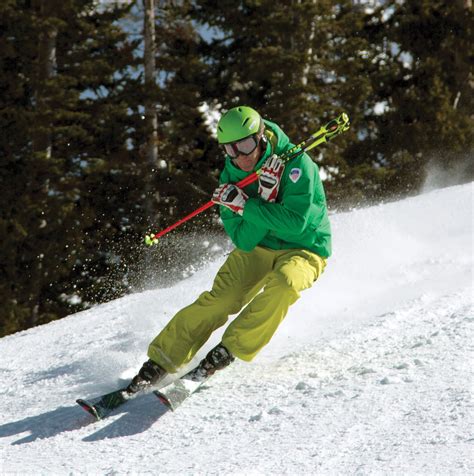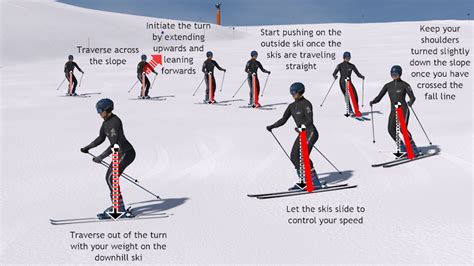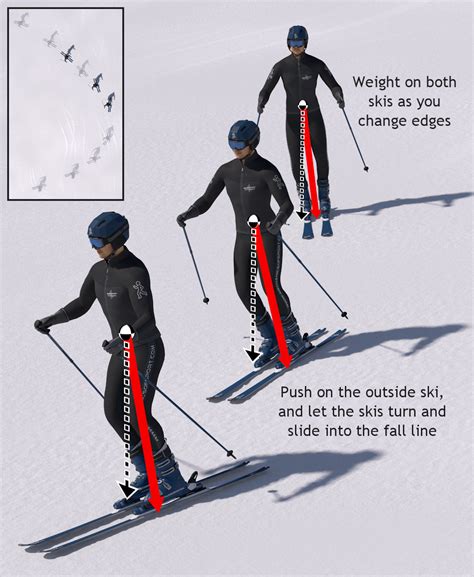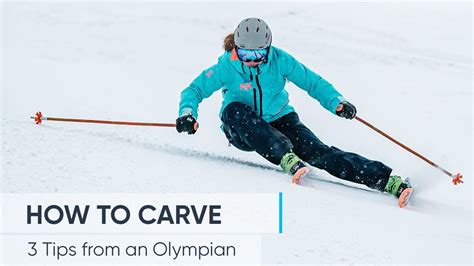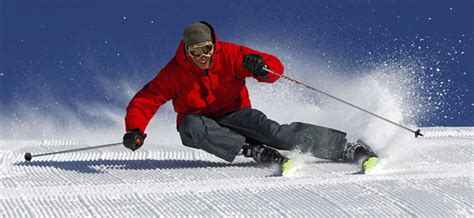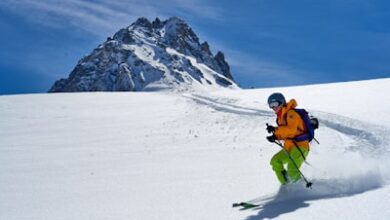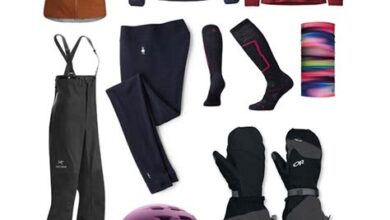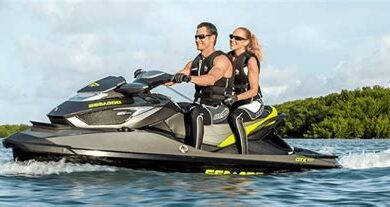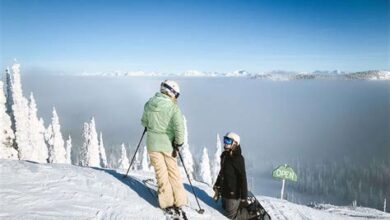How To Carve Skiing?⏬
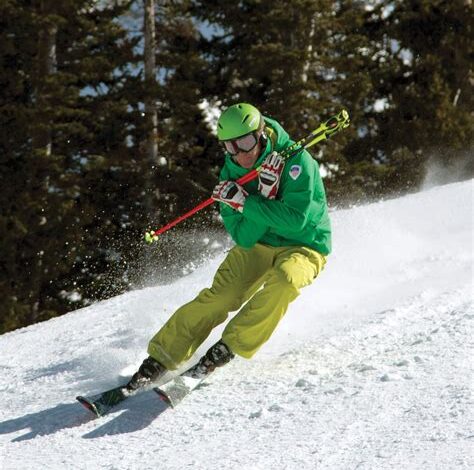
Learn the essentials of carve skiing with tips for beginners, executing ski turns, and mastering deep carves even on icy slopes.As the winter season blankets the mountains with a pristine layer of snow, the allure of carving down the slopes with grace and precision tempts skiers of all levels. Carving, the artful dance between skier and snow, is essential for those looking to elevate their slope skills from mere shuffling to eloquent gliding. In this comprehensive guide, “How To Carve Skiing,” we will explore the intricate details of carving, starting with foundational techniques for those new to the sport, progressing to executing fluid turns, and finally mastering the craft on the most challenging icy terrains. Whether you’re a complete beginner or someone looking to refine deep carves, we’ll break down the essentials of this dynamic skiing method step-by-step. So strap on your boots, click into your skis, and get ready to transform your descents into an exhilarating expression of speed and control on the snowy canvas.
How To Learn Carve Skiing
Carve skiing is an advanced skiing technique that enables skiers to make cleaner, more precise turns on the slopes. It involves tilting the ski onto its edge to engage its sidecut, which is the curved shape of the ski, and allows the skier to follow the arc that the ski naturally wants to make through the snow. This method minimizes skidding, offering a smoother, faster ride and a great sense of control. Here are some tips on how to learn carve skiing.
For beginners aiming to master how to carve ski turns, it’s essential to become comfortable with the fundamentals of skiing. Start on gentle slopes to build confidence and skill. Pay particular attention to your stance: it should be balanced and forward, with your weight centered over the middle of the skis. Ensure you keep a solid, athletic position with your knees and waist slightly bent. This posture provides the flexibility and balance needed for effective carving.
How to carve skiing for beginners also involves understanding the dynamics of a carved turn. A carved turn comprises three phases: initiation, shaping, and completion. During initiation, you roll your knees into the direction of the turn, transferring your weight onto the edge of the downhill ski. Shaping the turn is where the ski’s sidecut does the work, and you maintain consistent edge pressure to sustain the arc. Completion is when you gradually lessen the edge angle to release the turn, shifting your weight across to prepare for the next turn.
How to carve skiing on icy slopes, requires extra focus on edge control and balance, as the slippery surface offers reduced friction. Sharp, well-maintained ski edges are a prerequisite for icy conditions. When carving on ice, use subtle movements and roll your knees gently into each turn. It’s critical to stay calm and not to overedge, which might cause the skis to slip out from under you.
For those who aspire to learn how to carve deep carves in skiing, practice is vital. Deep carving demands greater angulation – the creation of a bigger angle between your legs and the slopes. This leads to a higher edge angle and allows the skis to bite harder into the snow. You must have a good sense of rhythm and commitment to the turn’s shape, letting the skis sweep you across the slope with power and precision.
- Start with the basics on gentle slopes and focus on a balanced stance.
- Understand the phases of a carved turn and work on smooth transitions.
- Maintain sharp edges on skis, especially when carving on icy slopes.
- Practice consistently to develop the skill necessary for deep carving.
| Carving Component | Description | Tips for Improvement |
|---|---|---|
| Initiation | Rolling knees towards the turn to edge the ski. | Focus on a fluid motion into the turn and even weight distribution. |
| Shaping | Maintaining edge pressure to form the ski’s arc. | Stay balanced and avoid leaning too far into or out of the turn. |
| Completion | Releasing the turn to smoothly transition to the next. | Lessen edge angle gradually and prepare to shift weight. |
How To Carve Ski
Carving on skis is a thrilling and dynamic way to navigate down the slopes with precision and speed. Whether you’re looking to refine your technique or are stepping into carving for the first time, the process requires practice and understanding of the fundamentals. To carve ski effectively, one must ensure proper stance, edge control, and smooth transitions between turns.
Before attempting to carve ski, it’s vital to ensure you have the adequate equipment. Carving demands skis with a wide tip and narrow waist, designed to facilitate easier edge-to-edge movements. As you advance, employing skis specifically made for carving will greatly enhance your control and the sharpness of your turns.
When you’re ready to start, focus on maintaining a forward stance, with your shins pressing against the front of the boots. This position allows for optimal balance and force distribution. The key to a successful carve lies in tilting the skis on their edges and using the ski’s sidecut to generate a natural arc. Ensure your weight is distributed correctly, mainly on the downhill ski, while the uphill ski provides support and stability.
- Achieve a balanced stance: Alignment and balance are crucial. Keep your body centered over the skis to allow for seamless edging and transition.
- Initiate turns with confidence: Use your ankles and knees to roll the skis onto their edges, and commit to the turn’s arc.
- Maintain a steady rhythm: Fluid and continuous movements are essential. Consistent turn shapes will keep your momentum going and help improve your overall technique.
Once you become comfortable with the carving technique, the following progression is to learn how to manage varying conditions and scenarios. Carving on different terrain, such as icy slopes or executing deep carves in skiing, demands slight alterations in approach and even more pronounced edge grip. Regardless of the challenges, the satisfaction of carving clean lines down a mountain is undeniable and keeps many skiers aspiring to perfect their carving skills season after season.
| Technique | Description | Tips |
|---|---|---|
| Edge Control | Using ski edges to carve turns | Apply pressure to the edges smoothly for effective carving |
| Stance | Proper body position | Lean forward slightly, pressing shins into boots |
| Turn Initiation | Beginning the carving turn | Roll knees into the turn to engage ski edges |
How To Carve Skiing For Beginners
Initiating your journey into carve skiing can be an exhilarating experience, combining the thrill of speed with the grace and precision of skiing’s finest techniques. For novices, understanding how to carve turns efficiently is fundamental to mastering the slopes and enhancing overall skiing prowess. To carve ski effectively requires a synergy of balance, edge control, and fluid movements, where the skis slice through the snow with minimal skidding, creating a clean arc that is both swift and controlled.
Carve skiing for beginners hinges on a foundation of core skills and basic principles that, when practiced diligently, lead to more advanced carving techniques. Start with ensuring that your skiing equipment is suited to your level, as proper gear enhances your ability to maintain control and responsiveness. During your initial attempts at carving, it’s essential to select a gentle slope, one that’s not too steep, allowing you to focus on technique without the added pressure of navigating a challenging incline.
Mastering the stance is crucial for how to carve ski turns. A balanced, athletic stance with knees and hips slightly bent, and weight predominantly on the balls of your feet, will provide the stability and flexibility needed for effective turning. It’s also helpful to keep in mind that carving involves rolling your knees into the turn, leading with the inside ski, and allowing your body weight to shift naturally, thus engaging the edges of your skis in cutting into the snow.
When facing the challenge of how to carve skiing on icy slopes, it becomes even more important to trust your edges and maintain a consistent, forward-leaning stance. Icy conditions require confidence in your edge grip and a precise angulation of the body to ensure that your skis don’t lose their hold on the hard surface. Practice is paramount, as is the willingness to tackle less-than-ideal surfaces with composure and skill.
As your confidence grows, you may wish to explore how to carve deep carves in skiing. This entails a commitment to more aggressive edging, greater speed, and honing your ability to transition smoothly between turns. The thrill of deep carving lies in the speed and dynamic forces at play, as well as the satisfaction of leaving behind a signature S track, emblematic of precise, high-performance skiing.
- Start with the right gear and ensure it is appropriate for your skill level.
- Choose a gentle slope to begin practicing your carving technique.
- Adopt a balanced, athletic stance, focusing on weight distribution and flexibility.
- Gradually progress to steeper and icier slopes as you gain confidence.
- Practice edging and transitioning smoothly to carve deep arcs.
In conclusion, while the art of carve skiing may initially appear daunting for beginners, there’s a clear pathway to progression. Attention to technique, gear, stance, and an understanding of slope conditions can transform the novice into a proficient carver. By embracing these foundational aspects, beginners will be well on their way to experiencing the full exhilaration of carving down the powdery slopes.
How To Carve Ski Turns
Mastering the art of carve turns in skiing is a pivotal step to advancing from the basics of skiing to the fluid, dynamic motions that mark an experienced skier. Carve turns are not only efficient but also aesthetically elegant, allowing for swift direction changes with minimal friction. Unlike skidded turns, which tend to slow you down, carve turns maintain your speed down the slope, offering a thrilling experience. To achieve optimal carve turns, one must understand the interplay between body positioning, weight distribution, and edge control.
Initiating a carve turn typically starts with the positioning of the skis on their edges. This action requires a certain level of commitment as you will need to angle your body into the slope to create the necessary edge angle. Sublime coordination is crucial; your ankles, knees, and hips must all be in alignment, tilting in the direction of the turn, while your upper body remains upright and counterbalanced. The downforce created allows the ski’s edge to cut into the snow, shaping a smooth arc.
Moreover, progression through the turn calls for a dynamic shift in weight from one ski to the other. Starting with pressure on the downhill ski, the skier gradually transitions their weight onto the uphill ski, driving the turn through the movements of their lower body. Experienced skiers will use their poles as a rhythmic guide for timing these transitions, planting the pole at the turn initiation and releasing it as they glide into the new direction. This technique ensures that each carve turn is both precise and fluid.
In the context of icy slopes or while aiming for deep carves, additional factors come into play. To carve ski on icy terrain, your edges must be sharp and your body control even more precise to prevent slipping. When seeking to establish deep carves, low stance and a strong angulation can intensify the depth of the turn, giving you that bolder line in the snow that advanced skiers aspire to achieve. With patience, practice, and attentiveness to these key aspects, the art of the carve turn becomes an attainable skill.
Below is a straightforward list of steps to practice the process of carve skiing:
- Become comfortable with basic skiing techniques and safety measures.
- Gradually practice tilting your knees into the turn to establish an edge.
- Emphasize proper weight transfer from the downhill to the uphill ski.
- Fine-tune your balance and stance to maintain a dynamic posture.
- Take note of the terrain and adapt your technique accordingly, especially on challenging slopes.
To visually summarize the essentials of carve skiing, consider the following table:
| Element of Carve Turn | Description and Tips |
|---|---|
| Edge Control | Essential for guiding the skis into a turn; an increased angle equates to a sharper turn. |
| Weight Transfer | Critical for driving the turn from initiation to completion; it starts from the downhill ski and transitions to the uphill ski. |
| Body Positioning | Alignment of ankles, knees, and hips, with a counterbalanced upper body, can greatly influence turn dynamics. |
| Pole Usage | Can provide timing and rhythm, facilitating smoother transitions between turns. |
| Stance and Angulation | A lower stance and strong angulation can assist in achieving deeper and more powerful carves. |
The journey to mastering how to carve ski turns is a rewarding process that evolves with practice and experience. By dedicating time on the slopes to refine these techniques, skiers can transform their rudimentary turns into the much-coveted flawlessly edged carves.
How To Carve Skiing On Icy Slopes
Mastering the art of carving on icy slopes is a distinguished skill that sets apart experienced skiers from novices. Not only does it require refined technique, but it also demands an understanding of the unique challenges that icy conditions present.
The first step to successful carving on ice is to ensure that your ski equipment is properly tuned. Sharp edges are paramount as they will significantly improve your grip on the hard surface. Edge maintenance should be routinely performed to keep your skis in optimal condition for carving on ice.
When approaching an icy slope, it’s essential to stay balanced and keep your body aligned over your skis. Your stance should be slightly wider than usual to enhance stability. As you initiate the turn, focus on gentle and progressive engagement of the edges, rather than abrupt movements that could cause you to lose control. This is where edge control and smooth pressure distribution come into play while carving ski turns.
Carving skiing for beginners may seem daunting, particularly when faced with icy conditions. However, even beginners can learn to navigate icy slopes by starting on gentler terrain to build confidence, and then gradually progressing to steeper and icier pitches. It’s essential to practice maintaining a forward stance and staying committed to each turn, as hesitation can lead to skidding out.
For those seeking to create deep carves, the key is in the timing and intensity of your edge engagement. This advanced technique involves a dynamic, rhythmic movement of the body, where you drive your knees and ankles into each turn with precision and power. Be forewarned, deep carving on ice requires not only physical skill but also psychological fortitude to commit to each movement.
Remember that how to carve ski or how to learn carve skiing especially on icy slopes, takes time and patience to master. It involves a combination of practice, proper technique, and a dash of courage. With consistent effort, you too can experience the exhilarating sensation of cleanly slicing through ice, leaving a trail of crisp arcs behind you.
- Ensure ski edges are properly sharpened for optimal grip on ice
- Maintain a balanced, wider stance for greater stability on icy terrain
- Engage edges gently and progressively to avoid skidding
- Start on gentler slopes to build confidence before tackling steeper ice
- Practice dynamic movements for deep carves with a focus on timing and power
| Factor | Importance for Carving on Ice |
|---|---|
| Sharp Edges | Essential for grip and control |
| Stance and Balance | Crucial for stability and precision |
| Edge Engagement | Key for smooth and sustained carving turns |
| Confidence | Necessary to commit to each turn fully |
| Technique | Improves with practice and patience |
How To Carve Deep Carves In Skiing
Mastering deep carves in skiing is a sought-after skill for many enthusiasts looking to elevate their slope adventures. Deep carving not only adds an exhilarating edge to your turns but also enhances your overall control and speed management on the mountain. By incorporating a few key techniques and practices, you can learn to execute deep carves like a pro.
To begin your journey towards carving deep turns, you must understand the importance of proper stance and weight distribution. Positioning yourself with a slight forward lean and centering your weight over the middle of your skis enables you to maintain balance and initiate turns with precision. Engaging your core and maintaining flexibility in your knees and ankles will allow for smoother and more dynamic movements.
Next, focus on your technique for initiating a deep carve. Starting each turn with a deliberate and powerful edge set is crucial. You must roll your knees and ankles into the turn, causing the edges of your skis to bite into the snow, creating a sharp, clean line. It’s essential to press down into the snow with your downhill ski, allowing the shape of the ski to guide you through the arc of the turn.
Controlled speed is also vital when carving deep turns. To manage your velocity and master each carve, you’ll need to exercise patience and progressive edging — the gradual increase in edge angle throughout the turn. By modulating the amount of edge and pressure you apply, you create a powerful carve that not only feels good but also keeps you in control.
Lastly, practice makes perfect when it comes to carving deep carves in skiing. Spend time refining your turns on various terrains, and don’t hesitate to take lessons or workshops that focus on deep carving techniques. With consistency and dedication, you’ll find yourself carving deeper and with more confidence, elevating your skiing prowess to new heights.
In conclusion, by prioritizing proper stance, powerful edge sets, controlled speed, and practice, you can become proficient at carving deep carves on the ski slopes. Remember, each individual’s progress may vary, so be patient with your learning curve and enjoy the thrill of the ride!
Frequently Asked Questions
What does it mean to carve while skiing?
Carving in skiing refers to a technique where the skier tilts the ski onto its edges and makes a clean turn without skidding, allowing the ski’s shape to guide the turn radius.
Why is carving an important skill in skiing?
Carving is important as it gives skiers greater control and precision over their movements, allowing for more efficient and speed-conserving turns. It’s also essential for handling higher speeds and for racing.
What are the basic steps to learn carving on skis?
The basic steps include: 1) Proper stance with knees and hips slightly bent, 2) Leaning into the edges of your skis to initiate a carve, 3) Maintaining balance through the core, and 4) Allowing the skis to follow their sidecut radius to make a smooth, arced turn.
Can beginners learn to carve, or is it an advanced technique?
While carving is often seen as an advanced technique, beginners can learn the basics of carving with proper instruction and practice on gentler slopes before progressing to more challenging terrain.
What type of skis are best for carving?
Carving is best performed with skis that have a pronounced sidecut, a design where the tip and tail of the ski are wider than the waist, which facilitates easier turning. Stiffer skis also tend to hold an edge better during a carve.
How do ski conditions affect the ability to carve?
Ideal carving conditions are found on well-groomed, packed snow. Ice or heavy powder can make carving more difficult and challenging, as the edges of the ski have less grip or may sink into the snow.
What is the difference between carving and other skiing techniques, like skidding?
Carving is defined by the skis traveling along their edges in a clean, arced path, while skidding involves the skis sliding sideways across the snow surface, causing friction and slowing the skier down. Carving is a more precise and efficient form of turning compared to skidding.

